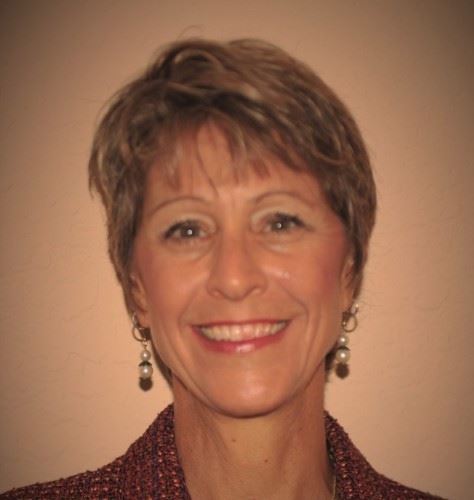 by Teresa Jurgens-Kowal, PhD, PE, CPEM
by Teresa Jurgens-Kowal, PhD, PE, CPEM
Global NP Solutions
Building Innovation Leaders
What do you think about networking? If you’re like most engineers, the word networking suggests images of pushy people shaking your hand, shoving a business card at you, and then walking away. You might think that expert networkers fall pretty close to used car salesmen and greedy life insurance agents. Yet becoming a strategic networker is important for your career and growth as an engineer, engineering manager, and professional in general.
What is Networking?
A common misunderstanding is that networking is attendance at an event followed by the exchange of business cards. Networking is much, much more than business cards. Of course, you should always have a professional business card, including your contact information, available to share with people as you meet them (and only if they ask for it). But the business card is only the beginning of a networking relationship.
Networking is really about building long-term relationships and helping other people. You can network with people inside your organization and external to your company. Often, as engineers and engineering managers, we build relationships with people that share a common interest, such as in the American Society of Engineering Management. Our relationships with other people include things we have in common, such as an interest in learning and growing as technical leaders. Thus, networking is creating a relationship with like-minded people and diverse individuals that will last over the long run.
Why We Network
With a mythical image of slimy characters trying to get us to buy something we don’t need, it’s hard to see why we should network. Yet, when you understand that networking is a professional skill, you will understand that it’s important to build long-term relationships with a variety of people. People use networking to build their knowledge and influence, for example.
When we meet different people in diverse settings, and especially when we meet new people that share a common interest, we can learn new information. Networking at events like ASEM’s annual conference leads to collaborative research and creative resources. Often, the simple act of talking to someone new about a favorite topic will yield new insights to tools, techniques, and applications. While many of us know a lot about one subject area, networking allows us to expand our understanding of the topic, especially in adjacent and tangential arenas.
Networking also provides an opportunity to influence the discussion and direction in your field of study. As an example, by attending networking events and getting to know different people, I have been presented with speaking opportunities leading to new insights on topics within my field of expertise. Talking about my favorite subject to a group of people who are largely unfamiliar with the topic enables me to reframe and simplify my assumptions as well as to openly share my personal opinions and experiences. Being presented with a chance to learn different perspectives and viewpoints through networking increases your own knowledge and allows you to influence others.
When to Network
If someone asked me, “When should I be networking?” My answer is: “All the time.” Too many people decide that it’s time to network when they are laid off from their job or the economy faces a downturn. This is the short game of networking, resulting in an ugly clamor for business cards from the single person at an event who is hiring. Because networking is about planting and nourishing the seeds of a relationship, it is no surprise that few people reap positive outcomes from attending one event and flashing around their newly printed business cards.
You will want to meet people whenever and however you can. Get to know them by asking pertinent questions and actively listening to their responses. Find the common ground – do you both have a history in the oil and gas industry? Maybe you both have industrial engineering degrees or are wondering about pursuing your CPEM credential. Pay attention to the other person’s passions and purpose. In five or ten years, you may be in the position of the hiring manager and by playing the long game, you’ll have a great candidate in mind because of the relationship you’ve built through common interests.
How to Strategically Network
The first key to strategic networking is to remember that you are trying to build a relationship with another person. Often, other people beginning with networking skills feels just as awkward as you do. My goal at networking events is simply to meet one new person. Because I am an introvert, I can be too quiet in larger groups and will not make connections with people. So, I intentionally look for another person who is also standing or sitting alone. With a deep breath, I approach and ask if I can join them.
Next, I ask why they are attending the event. This simple question can create a wonderful conversation and start to build our relationship on common ground. Maybe they came to the event because they thought the topic was interesting or they know the speaker. Affirm your reasons for attending the event and ask more questions. But, remember it’s not an inquisition – you are seeking to identify shared professional interests and create the seed of a relationship.
Where to Network
You want to build relationships within your organization, with people who share your education and trade, and with people that have diverse interests. If you come to a time in your life when you need a new job or help with a research paper, all these people will be great resources. It’s fairly easy to build a relationship with co-workers while working on a project together. Yet, you also want to consider creating ties with people in your organization that work in different departments and have different functional duties than you do. When you are in a leadership position, you’ll need to assemble a team of skilled individuals that you can trust, and people within your organizational network will be prime candidates!
Of course, networking at ASEM’s IAC and other engineering conferences is a great way to build technical relationships. Don’t forget that you can create professional relationships with people at organizations where you volunteer, or you share hobbies. I recently expanded my network by chatting with someone at the gym while we sweated on adjacent elliptical trainers. We connected even though I only had a crumpled-up business card at the bottom of my backpack. Our professional relationship is growing based on common technical interests and experiences.
LinkedIn is also a tremendous place to network. After every in-person networking event I attend, I try to connect with people I’ve met on LinkedIn. There I can learn more about their educational background and work experience to further our relationship. LinkedIn makes it super easy to congratulate people on promotions and say “Happy Birthday” on their special day.
Social media offers tools to search for people working in industries, companies, or jobs about which you might want to learn more. You can follow the activity of others and learn what is “hot” in your area of expertise. By commenting on articles posted on LinkedIn, you continue to build your own reputation while you build relationships with people who share common interests.
Take Action!
First, don’t be afraid to network. Erase any assumption that networking is a distasteful practice of shoving business cards at other people. Strategic networking is about building relationships with interesting people.
Second, identify an event where you can comfortably test your networking skills. ASEM is a great place to network with other engineers and engineering managers. You can test ideas, learn, and influence the field of study. As you build relationships with other ASEM members, you will find that networking becomes easier in both face-to-face and online situations.
Next, create an action plan for attending networking events. Identify someone you’d like to meet by reviewing the roster in advance or by finding another person who looks as awkward as you might feel. Ask short and simple questions about the event, seeking common ground. Don’t be discouraged if the other person doesn’t respond enthusiastically. They might just be feeling grumpy that day, or they really are checking in with the babysitter on their mobile device.
Connect with people you’ve met or admired on Linked In. Start with me at linkedin.com/in/teresajurgenskowal/ or Annmarie, ASEM’s Communications Director at linkedin.com/in/annmarieuliano/. Follow organizations (like ASEM), companies, and people that are interesting to you. Like and comment on articles and share good wishes with people who are celebrating birthdays or work anniversaries. It is risk-free to start with LinkedIn’s automated suggestions, but you should build your confidence in networking by adding your own unique comments to posts and articles.
Finally, remember above all that networking is about building relationships. If you promise to contact someone or do something for them, keep your word. Be polite, professional, and engaging. It’s always safe to listen more than you talk, and it is totally okay to leave a networking event with zero business cards!
Additional Resources
